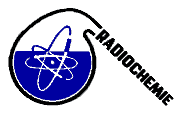Speaker
Dr
Maria Angela Menezes
(Nuclear Technology Development Centre / Brazilian Commission for Nuclear Energy, Division for Reactor and Analytical Techniques, Belo Horizonte, Brazil)
Description
Many laboratories apply the k0-INAA and several of them use comparators and spread sheet instead of neutron flux monitors and software for analysis and calculations. At the Laboratory for Neutron Activation Analysis, CDTN/CNEN, two variations of the k0-INAA are used, one is called in house k0-“monostandard” method - using comparator - and the other is the well known k0-standardization method - with neutron flux monitor. The first one, k0-“monostandard”, is an alternative method and it is used in some specific situations. This method is carried out with sodium as comparator, the values for f and α are average values for the carousel facility of the TRIGA MARK I IPR-R1 reactor and each sample is irradiated in one irradiation channel. The calculations are carried out with spread sheet.
Concerning the k0-standardisation method, it is applied irradiating the samples pile in the irradiation vial and intercalated by neutron flux monitor Al-Au (0.1%) IRMM-530RA foil cut into 6 mm diameter and 0.1 mm thick. The irradiation is performed in one irradiation channel in which the values for f and α were determined in this specific channel. For the calculation of the elemental concentrations, a software package called Kayzero for Windows is used.
In this paper, advantages and disadvantages of both procedures are discussed basing on the results of the reference material GBW 07401 (soil) analysed by both procedures.
Primary author
Dr
Maria Angela Menezes
(Nuclear Technology Development Centre / Brazilian Commission for Nuclear Energy, Division for Reactor and Analytical Techniques, Belo Horizonte, Brazil)
Co-author
Dr
Radojko Jaćimović
(Jožef Stefan Institute, Department of Environmental Sciences, Ljubljana, Slovenia)

